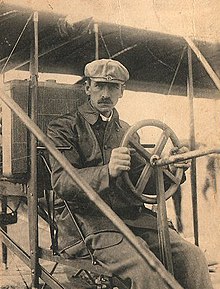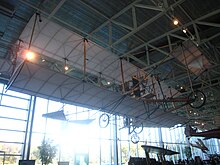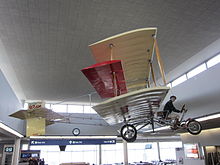
The Sopwith Camel is a British First World War single-seat biplane fighter aircraft that was introduced on the Western Front in 1917. It was developed by the Sopwith Aviation Company as a successor to the Sopwith Pup and became one of the best known fighter aircraft of the Great War.

The Curtiss JN "Jenny" was a series of biplanes built by the Curtiss Aeroplane Company of Hammondsport, New York, later the Curtiss Aeroplane and Motor Company. Although the Curtiss JN series was originally produced as a training aircraft for the US Army, the "Jenny" continued after World War I as a civil aircraft, as it became the "backbone of American postwar [civil] aviation".

The Avro 504 was a First World War biplane aircraft made by the Avro aircraft company and under licence by others. Production during the war totalled 8,970 and continued for almost 20 years, making it the most-produced aircraft of any kind that served in any military capacity during the First World War. More than 10,000 were built from 1913 until production ended in 1932.

The Vultee BT-13 Valiant is an American World War II-era basic trainer aircraft built by Vultee Aircraft for the United States Army Air Corps, and later US Army Air Forces. A subsequent variant of the BT-13 in USAAC/USAAF service was known as the BT-15 Valiant, while an identical version for the US Navy was known as the SNV and was used to train naval aviators for the US Navy and its sister services, the US Marine Corps and US Coast Guard.

The Beechcraft Model 17 Staggerwing is an American biplane with an atypical negative wing stagger. It first flew in 1932.

The Curtiss Robin, introduced in 1928, was a high-wing monoplane built by the Curtiss-Robertson Airplane Manufacturing Company. The J-1 version was flown by Wrongway Corrigan who crossed the Atlantic after being refused permission.
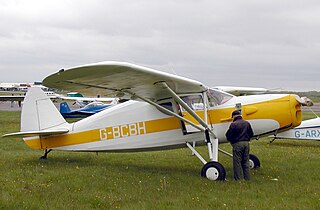
The Fairchild Model 24, also called the Fairchild Model 24 Argus and UC-61 Forwarder, is a four-seat, single-engine monoplane light transport aircraft designed by the Fairchild Aviation Corporation in the 1930s. It was adopted by the United States Army Air Corps as UC-61 and also by the Royal Air Force. The Model 24 was itself a development of previous Fairchild models and became a successful civil and military utility aircraft.
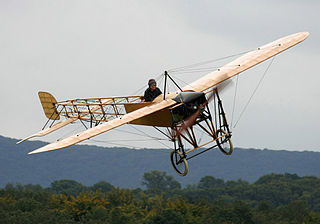
The Blériot XI is a French aircraft of the pioneer era of aviation. The first example was used by Louis Blériot to make the first flight across the English Channel in a heavier-than-air aircraft, on 25 July 1909. This is one of the most famous accomplishments of the pioneer era of aviation, and not only won Blériot a lasting place in history but also assured the future of his aircraft manufacturing business. The event caused a major reappraisal of the importance of aviation; the English newspaper The Daily Express led its story of the flight with the headline "Britain is no longer an Island".
Cole Palen was the founder of the Old Rhinebeck Aerodrome, a living museum of vintage aircraft from 1900-1937 located in Red Hook, New York. Palen's aerodrome boasts one of the finest collections of antique aircraft in the world, including an original Bleriot XI, the oldest flying aircraft in the United States and the second oldest in the world.
The Old Rhinebeck Aerodrome is a living museum in Rhinebeck, New York. It owns many examples of airworthy aircraft of the Pioneer Era, World War I and the Golden Age of Aviation between the World Wars, and multiple examples of roadworthy antique automobiles.

The Caudron G.3 was a single-engined French biplane built by Caudron, widely used in World War I as a reconnaissance aircraft and trainer.
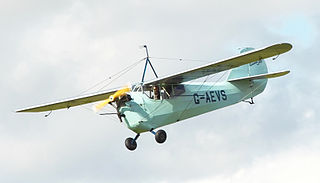
The Aeronca C-3 was a light plane built by the Aeronautical Corporation of America in the United States during the 1930s.
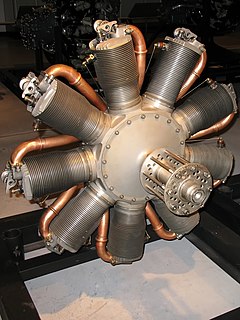
The Le Rhône 9J is a nine-cylinder rotary aircraft engine produced in France by Gnome et Rhône. Also known as the Le Rhône 110 hp in a reference to its nominal power rating, the engine was fitted to a number of military aircraft types of the First World War. Le Rhône 9J engines were produced under license in Great Britain by W.H. Allen Son & Company of Bedford, and in Germany by Motorenfabrik Oberursel where it was sold as the Oberursel Ur.II.

The Curtiss Model E was an early aircraft developed by Glenn Curtiss in the United States in 1911.

The Curtiss No. 2, often known as the Reims Racer, was a racing aircraft built in the United States by Glenn Curtiss in 1909 to contest the Gordon Bennett Cup air race in Reims, France that year.

The Travel Air 6000 was a six-seat utility aircraft manufactured in the United States in the late 1920s.
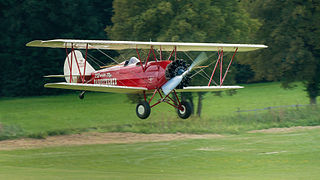
The Travel Air 2000/3000/4000 (originally, the Model A, Model B and Model BH were open-cockpit biplane aircraft produced in the United States in the late 1920s by the Travel Air Manufacturing Company. During the period from 1924–1929, Travel Air produced more aircraft than any other American manufacturer, including over 1,000 biplanes. While an exact number is almost impossible to ascertain due to the number of conversions and rebuilds, some estimates for Travel Air as a whole range from 1,200 to nearly 2,000 aircraft.
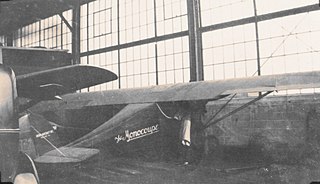
The Velie Monocoupe was an American general aviation aircraft manufactured from 1927 to 1929 by the Mono-Aircraft Corp, a division of Velie Motors Corporation.
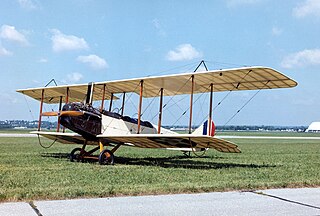
The Standard J is a two-seat basic trainer two-bay biplane produced in the United States from 1916 to 1918, powered by a four-cylinder inline Hall-Scott A-7a engine. It was constructed from wood with wire bracing and fabric covering. The J-1 was built as a stopgap to supplement the Curtiss JN-4 in production.
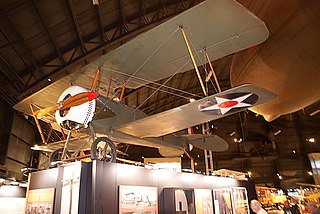
The Thomas-Morse S-4 Scout was an American biplane advanced trainer, operated by the United States Army and the United States Navy. Dubbed the "Tommy" by pilots who flew it, the aircraft became the favorite single-seat training airplane produced in the U.S. during World War I. It had a long and varied career beginning with the S-4B, which first appeared in the summer of 1917.

